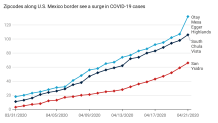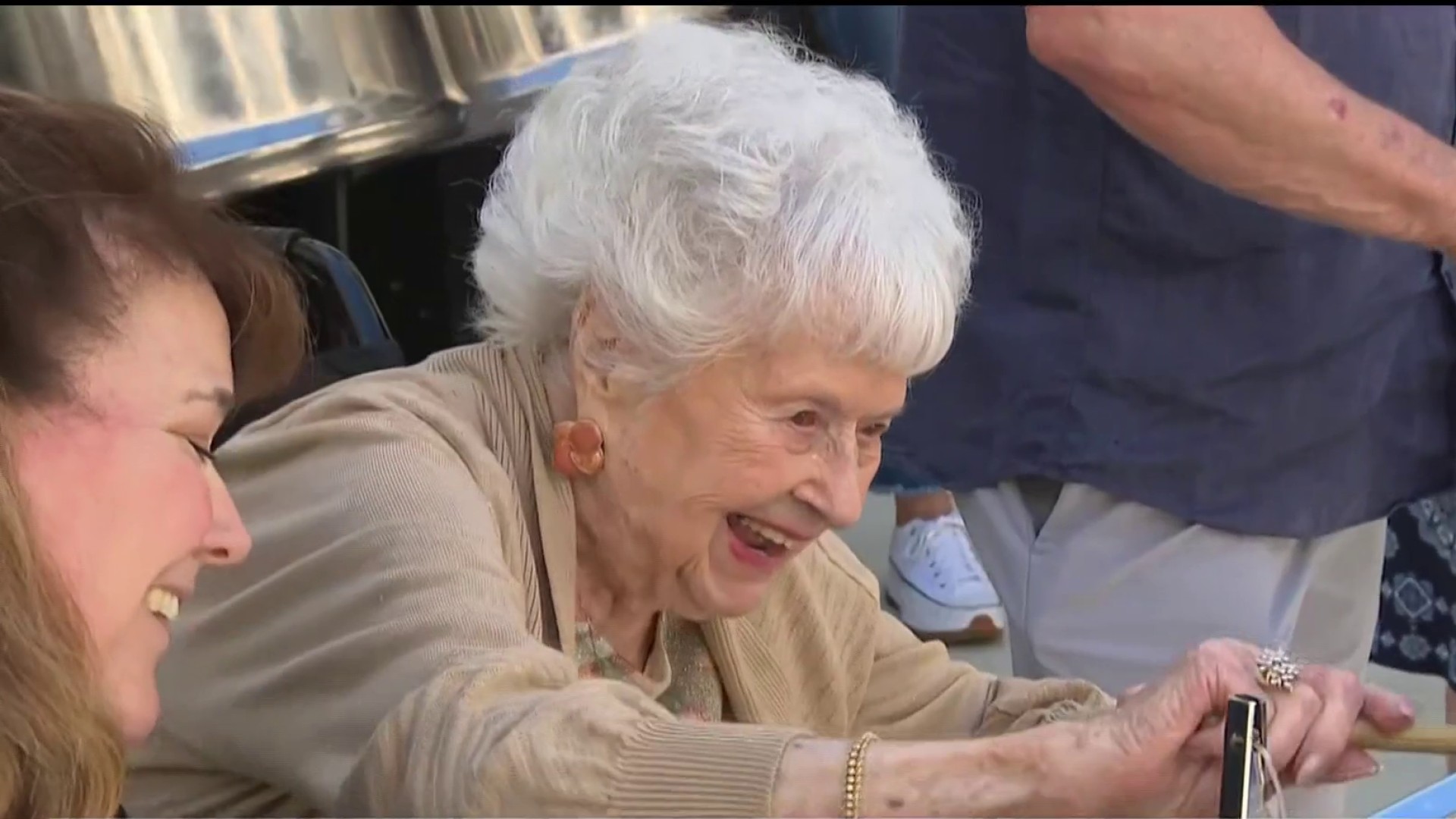One part of San Diego is performing noticeably worse. NBC 7 Investigates uncovered a growing concentration of new coronavirus cases in three zip codes – and they all have something in common.
92173, 92154, and 91911: San Ysidro, Otay Mesa, and South Chula Vista, respectively. All three have something in common they'd rather not: these three zip codes have seen a surge in new cases this month. They also claim the highest rate of cases per capita than surrounding zip codes, sporting some of the highest rates in the county.
It's hard to ignore, all three zip codes also are right along the border with Mexico.

"I don't know what to think anymore,” Aida Ruby Davias, a commuter taking the trolley said. “It's really bad. It’s real. It’s real."
"It's scary,” said Stephanie Cruz, a commuter taking the trolley. “It's scary because it's frightening, the virus, it keeps spreading it's fast."
The apparent hot zone in San Ysidro might be scary, but it’s not unexpected said Davias.
"I'm not surprised,” Davias said. "Look where we're at, we're at the border, where there are two different countries."
In fact, the surge in cases in San Ysidro wasn’t surprising to most folks NBC 7 spoke to at the trolley stop just outside the pedestrian port of entry.
"I mean I believe it,” said Salvador Avila, commuter taking the trolley. “Tijuana has people everywhere, it's not like in the states."
Avila says public health orders are too relaxed in Mexico.
"I don't think they take it as seriously as it is,” Avila said. “They should."
"This disease doesn't respect borders,” said Ev Meade, a professor at the University of San Diego. He says we need to wait for evidence before anyone begins to speculate.
It's also important to remember, these cases are reported by where the patient lives, not where he or she travels - much less where he or she might have contracted the virus - information we just don't yet know.
"It's got to be a huge concern for public health officials,” Meade said. “The thing that we can't do though is confuse coincidence with causality. We can't just presume that just because it's in the south county it's something that came from Mexico."
Meade says it’s also highly likely that cases of the coronavirus in Northern Mexico originated from the U.S., not the other way around.
"One of the things that we've learned over the course of this pandemic is that there's a lot we don't know about the transmission and it can be really random,” Meade said.
Both Sharp Healthcare and Scripps Health, which have hospitals in the South Bay, confirmed to NBC 7 they have seen an uptick in patients over the last week, but say they have now since stabilized.
Statement from Sharp HealthCare:
Over the past few weeks, South Bay hospitals have indeed been seeing a higher daily census of positive COVID-19 patients when compared to other hospitals in the county. The daily patient census fluctuates daily, sometimes hourly. There also appears to be a higher percentage of Persons Under Investigation or PUIs in South Bay converting to positive status, although the reasons for that conversion rate are not yet fully understood.
Last evening, Sharp Chula Vista did receive several hospital admissions in a relatively short period of time, which was somewhat atypical. On Wednesday, patient volume is typical to volumes experienced in previous days. San Diego leaders have expressed concern over the COVID-19 experience in Mexico and are evaluating if new and additional measures need to be taken.
Statement from Scripps Health:
We are efficiently and effectively caring for COVID-19 patients at Scripps Mercy Hospital Chula Vista. We have seen an increase in the number of COVID-19 inpatients at Scripps Chula Vista since early April, but patient volume appears to have stabilized in the past week. We continue to closely monitor the situation at Scripps Chula Vista, as we do at all Scripps facilities.
Scripps Health’s unified command center has a plan in place to provide treatment space, staffing, equipment, and other support to all of our facilities, given shifts in patient demand. In a situation where patient volume exceeds capacity at one of our hospitals, Scripps has the ability to relocate patients to a facility where we have the necessary space and resources. With five hospital campuses across San Diego County, Scripps is well-positioned to support patient care needs at all of our locations.



